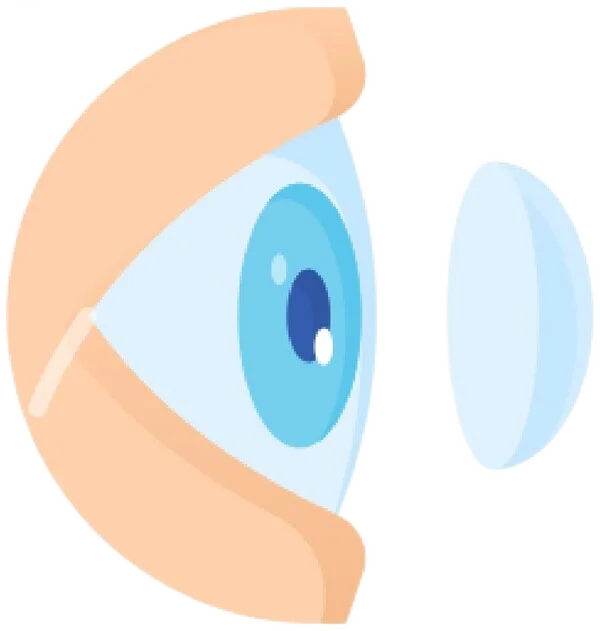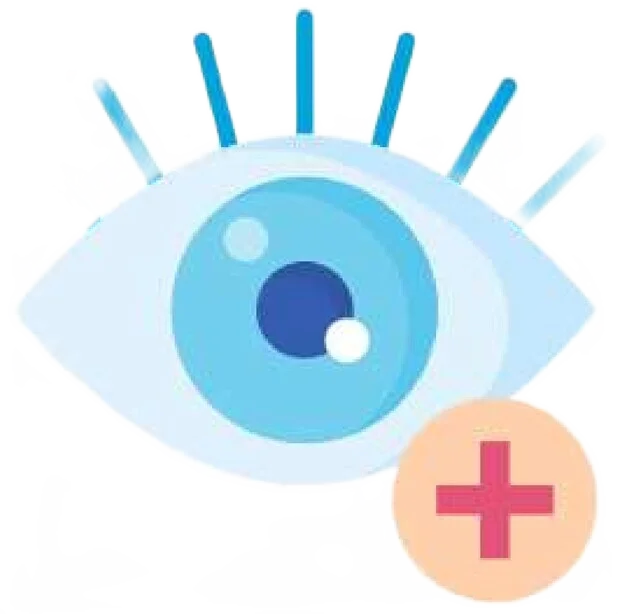
What is an Eye?
The eyes are the most complex sensory organ in our bodies. The eyes provide vision by recording images of our surroundings that the brain will interpret. Although the eye measures only about an inch in diameter, it helps to visualize and collect information about what is going on around us.
Our eyes work similarly to a camera as they have a lens that focuses the incoming light and transforms it into a “picture”. A specialized cell layer of the eye called the retina acts as a film that helps produce an image.
Anatomy of the Eye
External Anatomy
When we look into the eyes, we can usually see the following structures:
- Iris: A circular pigmented muscle that gives the eyes colour and controls the size of the pupil by enlarging it in dim light and contracting it in bright light. The central aperture of the iris is known as the pupil. The colour of the iris varies depending on the amount of eumelanin (brown/black pigment) and pheomelanin (red/yellow pigment) produced by melanocytes. More amount of eumelanin gives a brown colour whereas more pheomelanin is seen in blue- or green-eyed people.
- Pupil: An opening within the centre of the iris, the pupil controls the amount of light entering the eye by adjusting its size. Its colour appears black because of the presence of absorbing pigments in the retina.
- Cornea: The clear, transparent front layer of the eye through which light passes is called the cornea. It covers both the pupil and the iris.
- Sclera: This is the opaque white outer layer which forms the supporting wall of the eyeball. This layer is in continuity with the cornea and the dura of the central nervous system.
- Conjunctiva: The conjunctiva is a thin, transparent mucous membrane that lines the inner eyelid surface as well as the outer surface of the eyeball excluding the cornea. It prevents bacteria and other microbes from entering the eye.
Internal Anatomy
If we take a cross-section of the eyeball, the following structures can be identified:
Three different layers:
- External layer: This is made up of the sclera and cornea.
- Intermediate layer: The intermediate layer is divided into two parts, anterior and posterior. Anterior part consists of the iris and ciliary body and the posterior part consists of the choroid. The ciliary body is a structure that is made up of the ciliary muscle. It alters the shape of the lens when the eye focuses on an object. The choroid layer, present between the sclera and retina, consists of blood vessels and connective tissue. It provides nourishment to the inner parts of the eye.
- Internal layer: This is the sensory part of the eye and is formed by the retina.
Three chambers of fluid:
- Anterior chamber –present between the cornea and iris.
- Posterior chamber –present between the iris, zonule fibres and the lens.
- Vitreous chamber – located between the lens and the retina.
The anterior and posterior chambers are filled with aqueous humour, whereas the vitreous chamber is filled with vitreous humour, a more viscous fluid.
Lens: The lens helps to focus light on the retina. It is transparent and is located behind the iris. It is supported by ligaments called zonule fibres that are attached to the anterior portion of the ciliary body. The contraction or relaxation of these ligaments, as a result of ciliary muscle action, changes the shape of the lens. This process is called ‘accommodation’ and allows for the formation of a sharp image on the retina.
Lateral view
Retina: The innermost layer of the back of the eye, the retina consists of light-sensitive nerve endings that convert light into electrical impulses that are sent to the brain along the optic nerve. The macula is the central zone of the retina which provides the most central and distinct vision. In the centre of the macula is a region called the fovea which provides the sharpest vision.
Nerves and Blood vessels: The short and long ciliary nerves are branches of the nasociliary nerve that carries sensory impulses from the cornea and uvea (middle eye layer consisting of iris, ciliary body, and choroid). Blood reaches the eye from the ophthalmic artery through its branches– central artery of the retina, short and long posterior ciliary arteries, and the anterior ciliary arteries. The veins of the eye accompany the arteries and drain into the cavernous sinus through ophthalmic veins.
Optic nerve: The optic nerve is made up of several million nerve fibres. It carries visual impulses from the retina to the brain.
Optic disc or optic nerve head: Optic disc is a circular area at the back of the eye where the optic nerve joins the retina. This area does not respond to light stimulation because of the absence of photoreceptors and is known as “blind spot”.
Extraocular Muscles: The eyeball is held in position by various ligaments and muscles surrounding it. There are three pairs of extraocular muscles. Two pairs are the rectus muscles which include the superior rectus, the inferior rectus, the lateral rectus, and the medial rectus muscles. They run straight along with the eyeball and insert into the bony orbit of the skull.
The other pair of muscles is oblique muscles which include the superior and inferior oblique muscles. These muscles help in the rotation of the eyeball and also allow the image to be focused on the fovea of the central retina.







